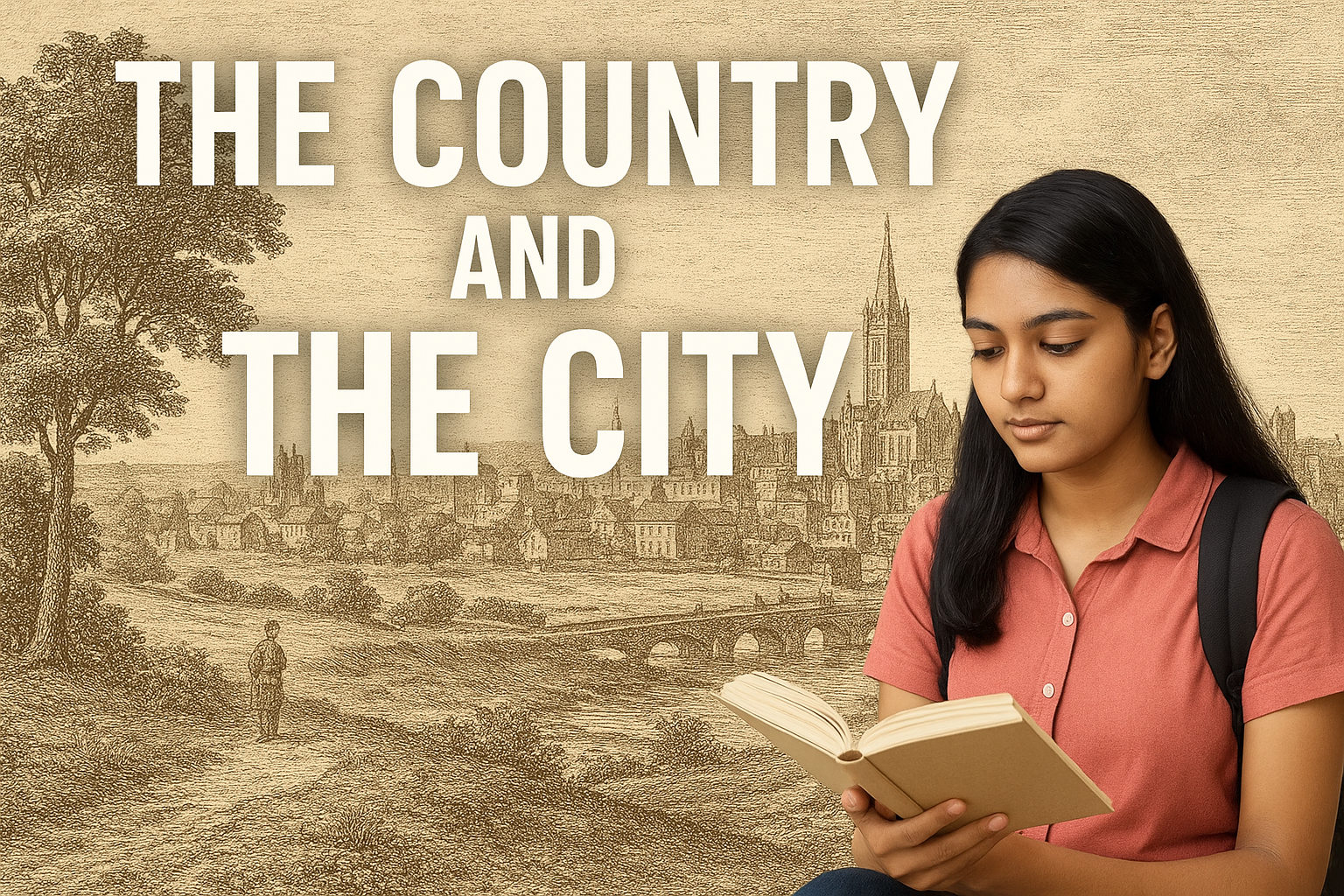The 18th century in Britain was a time of major social, cultural, and economic change. The rise of cities, the growth of trade, and the beginning of the Industrial Revolution deeply influenced British life and literature. The contrast between the country and the city became one of the most important themes of this period. Writers, poets, and thinkers explored how rural peace was being replaced by urban growth, new wealth, and changing social values.
Meaning of “The Country and the City”
“The Country and the City” represents two different ways of life.
- The Country was seen as peaceful, natural, and moral — a place of simplicity and honesty.
- The City, on the other hand, represented progress, ambition, and corruption.
This contrast reflected the real changes happening in Britain during the 18th century. Many writers used this theme to express their views on modernity, morality, and social transformation.
During the 18th century, Britain shifted from an agrarian society to a commercial and industrial one. Cities like London, Bristol, and Manchester expanded rapidly. New classes emerged — especially the middle class and industrial workers. Meanwhile, rural areas began to decline as people moved to cities in search of work and a better life.
The countryside, once seen as the “heart of England,” started losing its importance. However, it remained central in art and literature as a symbol of purity and tradition.
The Country and the City in Literature
The conflict between country and city life became a central theme in 18th-century British literature. Many famous writers explored it from different angles:
1. Alexander Pope
Pope’s works such as “Windsor-Forest” celebrated rural beauty and criticized urban greed. He admired the simplicity of country life and saw it as morally superior to the corruption of city living.
2. Jonathan Swift
Swift used satire to expose the flaws of urban society. In “A Description of a City Shower,” he described London as dirty and chaotic — far removed from the peace of the countryside.
3. Oliver Goldsmith
Goldsmith’s “The Deserted Village” is one of the most famous poems expressing nostalgia for rural life. It mourns the loss of traditional village values due to modernization and urban expansion.
4. Samuel Johnson and James Thomson
Both writers reflected on the moral and emotional contrasts between city luxury and country virtue. Thomson’s “The Seasons” praised nature’s beauty and the peaceful rhythm of rural life.
Social and Economic Impact
The growth of cities led to new opportunities but also new problems — overcrowding, poverty, and pollution. In contrast, rural areas faced depopulation and loss of traditional occupations. This transformation created a sense of loss and tension, often expressed in poetry and novels.
“The Country and the City” thus became more than just a setting — it represented a moral and cultural debate about what kind of nation Britain was becoming.
The Country and the City: Symbolism
| Aspect | The Country | The City |
|---|---|---|
| Symbol | Nature, purity, morality | Progress, ambition, corruption |
| Economic base | Agriculture | Trade and industry |
| Way of life | Traditional, stable | Modern, changing |
| Literary tone | Romantic and nostalgic | Realistic and critical |
Raymond Williams and the Later Perspective
In the 20th century, literary critic Raymond Williams published “The Country and the City” (1973), a major work that re-examined these 18th-century ideas. He showed how literature reflected changing class structures and the complex relationship between rural and urban Britain.
Williams explained that the ideal image of “country life” was often nostalgic — it hid the realities of poverty and inequality. Similarly, cities were not only corrupt but also centers of creativity and progress.
Conclusion
“The Country and the City” in 18th-century Britain reflects more than a physical divide — it shows the emotional, social, and moral transformation of a nation in change. British writers used this theme to question the cost of progress, industrialization, and modern life. Even today, the tension between rural peace and urban ambition continues to influence British thought and culture.
Frequently Asked Questions (FAQ)
Q1. What does “The Country and the City” mean in literature?
It refers to the contrast between rural life and urban life, often used to explore themes of morality, social change, and modernization.
Q2. Who explored the theme of The Country and the City in 18th-century literature?
Writers like Alexander Pope, Oliver Goldsmith, and Jonathan Swift explored this theme deeply.
Q3. What is Raymond Williams known for?
He is known for his book “The Country and the City” (1973), which analyzed how literature reflected Britain’s social and economic shifts.
